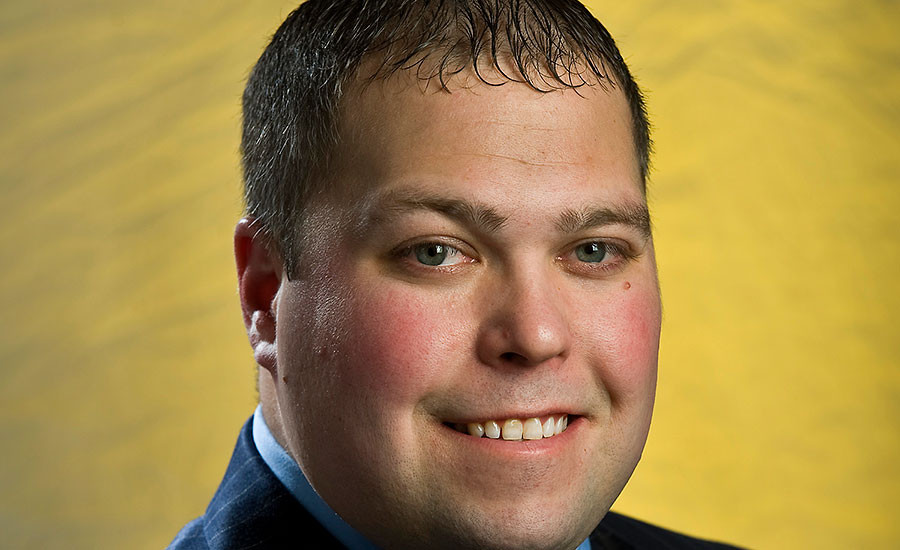As co-owner of Thrushwood Farms, of Galesburg, Ill., Doug Hankes has helped steer his family business into exciting new growth areas. As the president of the American Association of Meat Processors, Hankes has worked to ensure AAMP delivers timely information, advice and information to its members. Hankes will end his time as president at the upcoming AAMP Convention, held in Lexington, Ky. from July 20-22.
Hankes spent a few minutes talking with IP editor Sam Gazdziak about his experiences from the past year, and where AAMP and Thrushwood Farms are headed.
Looking back, how would you characterize your year as AAMP president?
There has been a lot of excitement. It’s been interesting to see the dynamic, unique group of members we have as an organization, from your small butcher shop in a strip mall all the way up to a large company. From my standpoint, on the executive board, the president is working with our wonderful staff to make sure we have information, services and options for everyone. I think that’s probably the most challenging but also the most rewarding part of it. It’s a constant evolution for sure, and I think that’s the part that makes AAMP’s structure very good. We’re going to have a lot of great things come to fruition over the coming two to three years, and hopefully I’ve been able to give my two cents to develop that stuff.
What were your goals going in, and how did you work to achieve those?
With the addition of Nelson [Gaydos, AAMP’s Outreach Specialist] to the staff, I set a personal goal to get him as much exposure as we could here in the spring. He hasn’t even been with us a year yet. Nelson, myself and Brad Turasky [of Turasky Meats], who’s also on the AAMP board, jumped into a vehicle, and we visited processors who were members, processors that were prospective members and a few that were past members, and tried to give him a sense of the diversity in the organization. That was really one of my goals, to give Nelson an outlook on the people he’s going to be talking to on the phone and give guidance to, and also to sit down with Chris [AAMP Executive Director Chris Young] and really get a feel for his vision of AAMP, how can we help as the board, and really lay the groundwork for some of the pieces to the puzzle that we’re going to put together.
In the members-only section of the AAMP website [www.aamp.com], there’s a great video that’s simplistic but is very helpful on hand washing. I think that’s something that a lot of us overlook when we’re training new employees, and that’s something that we’ve actually implemented in our own business as a training piece. Those are the types of things we’re going to be able to offer in the future that are really going to benefit our membership.
You’ve sponsored several new companies into AAMP over the past year. In your opinion, how important is it to bring in fresh blood into the organization like that?
One thing we have learned at AAMP is that a lot of processors want the information, whether it is digitally or in print, but they love reading. We’re all meat-heads at heart, and we all want to learn as much as we can. I think what I’ve found is that when we get out there, talk to people and really let them know the advantages of AAMP, it’s easy to get them to sign up for membership. When we can get them to come to an AAMP convention, the content that they get out of it is usually so much that they’re going to attend every year or every other year after you get to the first one. I think that’s one of the things that we try to push, how to get that new blood out there.
I think that’s the biggest challenge that this organization faces. Once you get to one of our events, you find out very quickly that you learn so much from them, and it’s not always something that happens in a session. It might be the conversation that happens right afterward.
When I was at the Wisconsin Association of Meat Processors show representing AAMP, one of the things I talked about in my presentation is that we’re all in this thing together, from Tyson Foods to Thrushwood Farms. We need to be pro-meat, and we need to promote meat and the great things that are happening in the industry and a little less time beating up on each other. We need to talk about why meat is such a great protein, and I hope that by when I’m said and done, that I’ve allowed the association to grow a little in that regard, and that we as a board are able to guide the organization and provide information to the members. Our membership and the ideas that come from new people and the people that have been active in the past and are active again because of a generational change, we all learn the most, and the interaction is the key to the whole thing.
From your travels this past year, what do you think are the biggest challenges for AAMP members, as well as their biggest opportunities?
Everybody starts with regulations, but I think the thing that we learn when we talk to people is, generationally, how do people adapt to new regulations, but also how do we make regulations work for us? How do we take some of the things that are out there and incorporate them into our businesses? One of the things we see that gets to be a benefit is that a lot of people are going back and re-evaluating nutrition facts. A lot of people are refreshing HACCP plans.
There is a lot of interest on the student side in small to medium companies, and I think that’s something that we as an organization are going to continue to drive. One of the things I hear a lot when I talk to processors is, “How do I go out and find somebody who would be interested in working in a small to medium-sized company?” I think we spend a lot of time talking about [that], and we’re going to start to do that at the AAMP Convention — finding a new voice and new people to influx into some of these businesses, where people are in their 50s, 60s and 70s, or maybe they’ve had a staff that’s been there for a long time and they’re looking for new ideas.
The positives far outweigh any of the negatives that are ever brought up. We are seeing an amazing interest in unique products, regional and local products. I think that today’s consumer really wants to know who they’re buying from. Pulling back the curtain of what meat processing is, and being very honest and open about it, is what I try to spend a lot of time talking to people.
As businesses, we have that advent of social media, and you can reach out to people as much or as little as you want to. I think it’s a matter of working with people as to what is a good plan, and how do you do that moving forward. I meet a lot of people who say, “Hey, I follow you on Twitter, Mr. Snack Stick. [Hankes’ Twitter handle is @snackstick.]
How is everything at Thrushwood Farms?
We are very lucky. We are growing; we have about 4 times as many employees we when I came home, hovering right around the 40 mark. We have expanded quite a bit. We’re almost 30,000 square feet now in the facility. We also have a 20,000 square foot warehouse leased as well. We’re making a lot of snack sticks and bites, and ground and formed jerky strips. We actually moved away from slaughter in the facility, but we’re trying to take all the efficiencies in making these products.
We do a lot of co-packing, and I think that was one of the biggest changes our company has seen. With the addition of several smokehouses and multi-head combi-weighers, additional rollstock machines, it’s given us the diversity to continue to grow, and we’re excited about the future.
What led to the decision to get away from slaughter?
It was a tough decision, because my parents started the company in 1977, and we opened in 1978. We were built around being a butcher shop that did custom processing, and we had a retail store. As we’ve grown throughout the years, my interest and my passion is on the shelf-stable meat snack side, specifically sausages and things. I enjoy ham and bacon production as well. It’s not that we drifted away from slaughter, but as the rest of our business grew where the interest was, the slaughter kept becoming such a small part of the business, and it was taking a lot of space in the facility because we dry-aged everything on the carcass side for a minimum of 14 days. It got to the point that the rest of the business outgrew that space, and we had to recapture that space. This spring, we completely stripped everything out and remodeled everything. I was just back in the livestock pens, which is now a brand new spice room. It was one of those things where you go through an evolution of where we as a company started to head, and now we’re there and needing to make change.
We’re definitely respectful of the past and felt terrible about local people not having a place to do those types of things, because those people are becoming few and farther between. But it was a family decision that it was something we needed to move away from.
What’s in the future plans for Thrushwood?
We just installed two new 4-trucks (smokehouses), and we put a second multi-head combi-weigher in. We’ve installed two additional rollstocks over the three that we had, all in the past 18 months. At this point, we’re looking to settle in a little bit! Our growth has been explosive, and we’re really trying to hone in on how technology is able to help us in the facility, and make our lives and our employees’ lives easier. We’re spending a lot of time in what’s the next thing in meat snacks. Is the next thing packaging, or new meat products? That’s the area where we’re trying to focus on.







